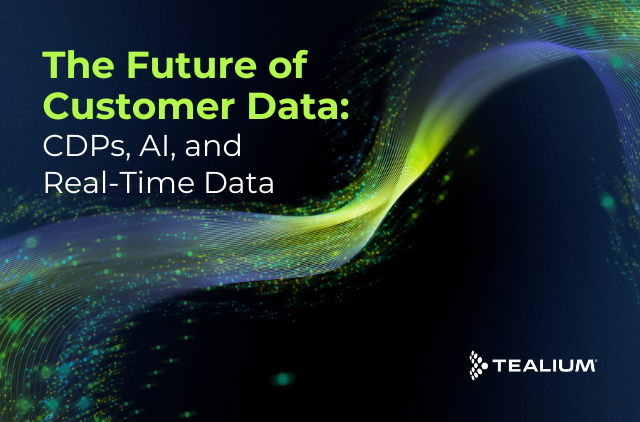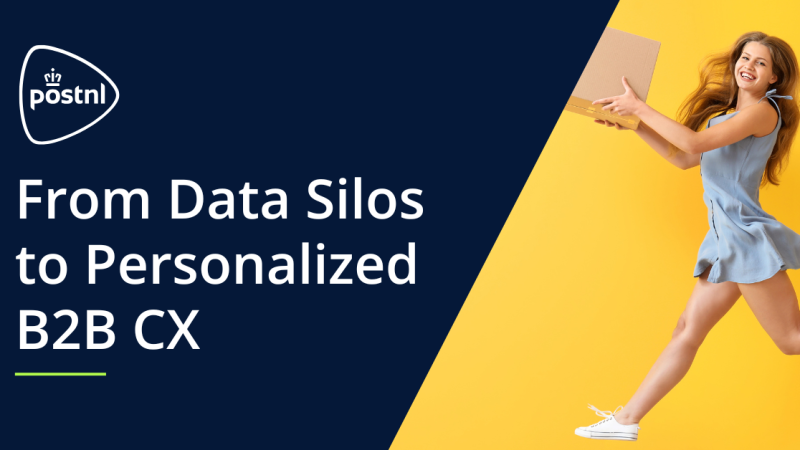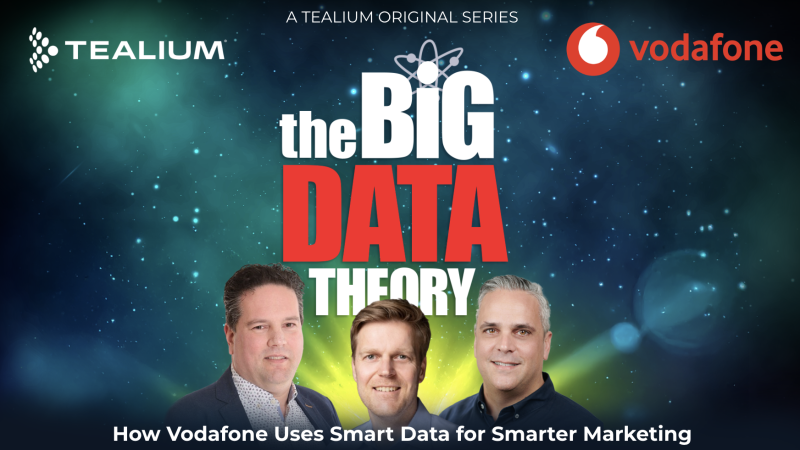In February of 2020, Google announced the deprecation of third-party cookies within the world’s most popular browser, Chrome. Four years later and after multiple deadline extensions, Chrome has only started restricting third-party cookies in 1% of all Chrome browsers as of last month. While all first-party cookies are safe, some suspect third-party cookies in Chrome will persist until 2025 – partly due to the lack of confidence in industry alternatives like Google’s Privacy Sandbox. So, why is Chrome’s third-party cookie deprecation taking so long and how can companies prepare for a world where data is a lot less easily accessible? How should you develop a first-party data strategy to compensate?
An organization’s first-party data will be critical to ensure competitiveness and longevity in a world where customers demand better experiences from brands. But collecting first-party data is only a part of the puzzle – what should companies do with first-party data once they’ve got it? A consent-driven first-party data collection strategy, combined with the right technology and expertise can launch organizations miles ahead of competitors who haven’t made similar investments in data, technology, and people. What organizations do now will lay the groundwork for customer experiences and relationship building for years to come.
Below we will discuss a data collection strategy built around consent and how a Customer Data Platform (CDP) can power tactics that you can begin using today to ensure you’re ready to make the most of your first-party data. This can be divided into two sections:
- Data Governance (Data Collection Strategy, Consent and AI)
- Technology Solutions: Customer Data Platform
How To Master Data Governance with Consent and Data
Building customer relationships doesn’t just require data – it requires a value exchange between the brand and consumer to acquire that data with consent. Data that is too personal and not willingly shared with the brand can break consumer trust and destroy the brand’s relationship with the customer. So, the question isn’t just about how you grow your first-party database, but also the value you provide in exchange for your customer’s data. Consumers are much more willing to give up their data in exchange for something of value such as a reward or personalized offering – explaining the advantages of exchanging data with your company or brand can help build the basis for a great first-party data collection strategy, better customer experience and stronger customer loyalty. Tools like Tealium’s Consent Integration for Tealium’s Tag Management System (TMS), Tealium TiQ Tag Management™, help you stay ahead of the curb when it comes to managing consent in your data by utilizing integrations that provide the option for users to opt in or out of enforcement patterns ensuring compliance with the GDPR and CCPA. TiQ’s consent integration helps reduce the risk of hefty regulatory fines that can come with inadvertently misusing customer data.
In addition to better customer relationships, a first-party data collection strategy built on consent can do more than strengthen your marketing efforts and enhance customer relationships. With laws like the GDPR and CCPA, proper data governance will shield brands from potentially hefty federal and state fines while also reinforcing AI models.
According to our 2024 State of the CDP report, 91% of companies with CDPs feel their CDP is critical to providing the right data available for AI/ML projects. As those numbers continue to expand, Tealium CEO Jeff Lunsford explains consent management will be vital to ensuring AI models that companies heavily rely on for crucial business decisions are fueled by consensually gathered data. If an AI model is trained with data from a customer who has opted out, that entire AI model is tainted because that user’s data can’t be extracted from the model the same way that it can be from a database. Consent reinforces the integrity of AI models which, in tandem with ethical data collection strategies, serve as the linchpin for data utilization.
Consensual data collection can take many different forms – onsite surveys, exclusive brand experiences, loyalty rewards, and tools can be an excellent way to collect customer data. For example, a Google search ad or Facebook ad can be used to entice users to exchange their information to be entered in a giveaway, a discount, or a unique brand experience. Another example could be a customer loyalty program incentivizing users to trade their data for prizes via a points-based rewards system. These data collection tactics are part of a larger, strategic first-party data collection strategy.
How To Get The Most ROI From Your Customer Data Platform
Collecting data does not do much good if it’s not used for a greater business purpose, but when that data is scattered across multiple systems (CRM, data warehouse, marketing tools, etc.), it becomes extremely difficult to make that data usable. The implementation of a CDP will streamline the management of your first-party data by stitching that data together into individual user profiles that help brands understand who their customers are and deliver better, data-driven customer experiences. 89% of companies with a CDP showed high levels of satisfaction in meeting their business goals over the past 12 months, significantly higher than those without a CDP.
 Given the amount of vendors, we think that choosing a CDP has never been harder. Tealium has been named a Leader in The 2024 Gartner® Magic Quadrant™ for Customer Data Platforms. We feel that Tealium’s patented visitor stitching technology and real-time data collection make it a great choice in a market filled with CDP providers that often fail to deliver on promises of real-time data collection.
Given the amount of vendors, we think that choosing a CDP has never been harder. Tealium has been named a Leader in The 2024 Gartner® Magic Quadrant™ for Customer Data Platforms. We feel that Tealium’s patented visitor stitching technology and real-time data collection make it a great choice in a market filled with CDP providers that often fail to deliver on promises of real-time data collection.
CDPs have experienced explosive growth over the past few years, fueled in part by the death of the third-party cookie and the need for better utilization of first-party data assets. As the world’s biggest companies adopt CDPs, better data governance strategies, and collect more data, understanding what to do with all this data and technology once you’ve got it is no easy task. Ensuring an ROI-positive implementation of a CDP requires the right people and processes in place to deliver on the promises of what that data and technology can deliver. Ensuring buy-in across the organization, involving all relevant teams from the beginning of the sales process and proper training will be essential to a successful implementation. Once a CDP is implemented, companies like Tealium have dedicated strategists who take the time to intimately understand your company’s business goals and marketing objectives to help guide you to success with your data and the platform. Tealium will help you create use cases that not only identify and stitch customer data but also help you activate that data across channels, create better customer experiences via personalization, and drive business outcomes.
CDPs necessitate organizational realignment to extract the most value for your business. As organizations embrace CDPs to harness the potential of first-party data, the journey toward maximizing first-party data assets necessitates more than just technological investment—it demands a holistic approach encompassing people, processes, and organizational alignment. With Tealium’s comprehensive support framework, encompassing strategic guidance, personalized use case development, and ongoing training, companies can unlock the full potential of their data, driving tangible ROI and cementing their position as industry leaders in their respective industries.
As the digital landscape continues to evolve into a more privacy-focused and relationship-built ecosystem, the convergence of proper data practices and technology solutions has emerged as the bedrock of sustainable growth and customer-centricity. By prioritizing consent-driven data collection and leveraging state-of-the-art platforms like Tealium, you can navigate the complexities of the modern data landscape with confidence, forging deeper connections with customers and unlocking new avenues of growth and innovation.
Gartner, Magic Quadrant for Customer Data, Lizzy Foo Kune, Rachel Smith, Benjamin Bloom, Suzanne White, Adriel Tel, David Walters, February 14, 2024.
GARTNER is a registered trademark and service mark of Gartner, Inc. and/or its affiliates in the U.S. and internationally, and MAGIC QUADRANT is a registered trademark of Gartner, Inc. and/or its affiliates and are used herein with permission. All rights reserved.
This graphic was published by Gartner, Inc. as part of a larger research document and should be evaluated in the context of the entire document. The Gartner document is available upon request from Tealium.
Gartner does not endorse any vendor, product or service depicted in its research publications, and does not advise technology users to select only those vendors with the highest ratings or other designation. Gartner research publications consist of the opinions of Gartner’s research organization and should not be construed as statements of fact. Gartner disclaims all warranties, expressed or implied, with respect to this research, including any warranties of merchantability or fitness for a particular purpose.








